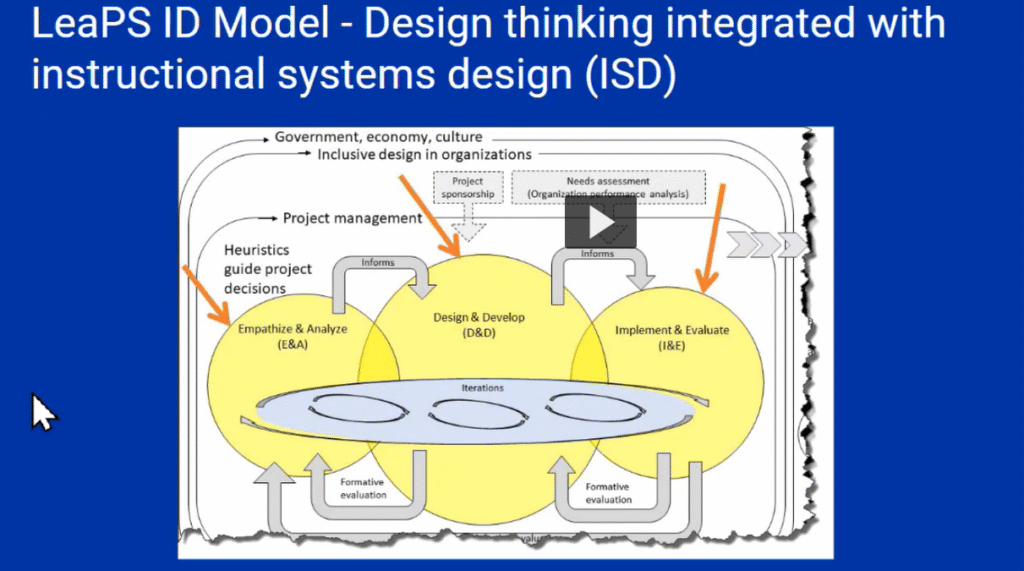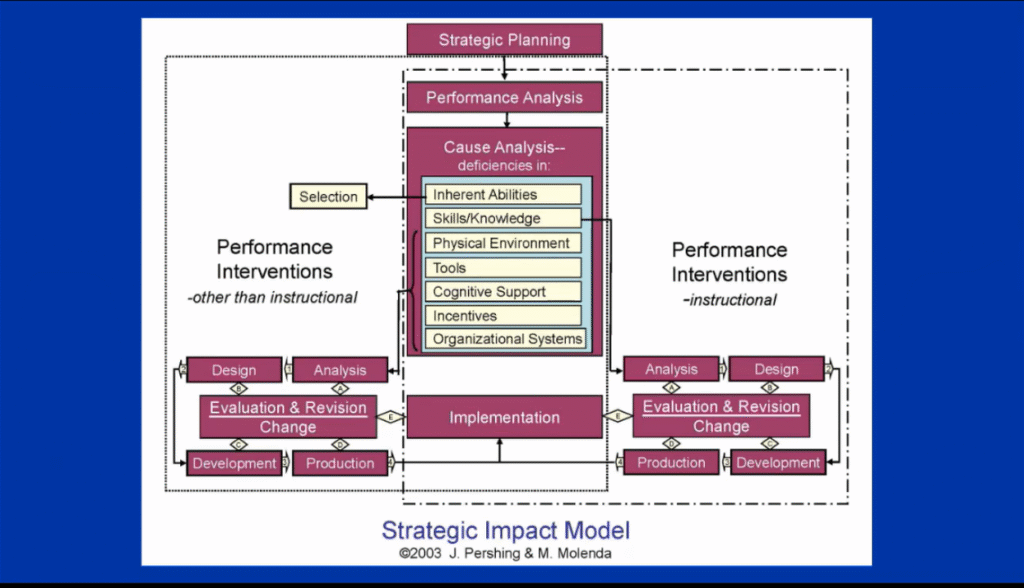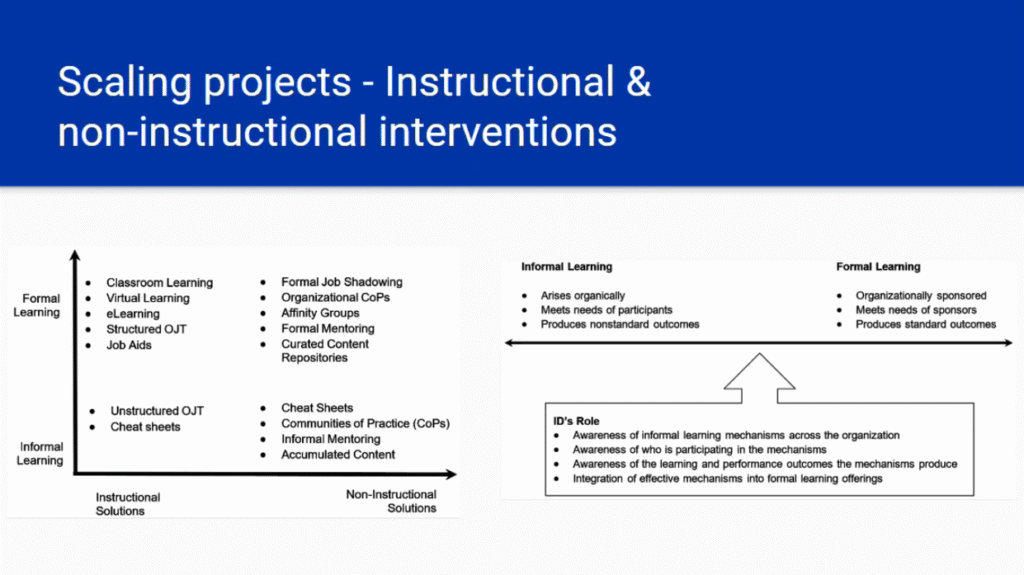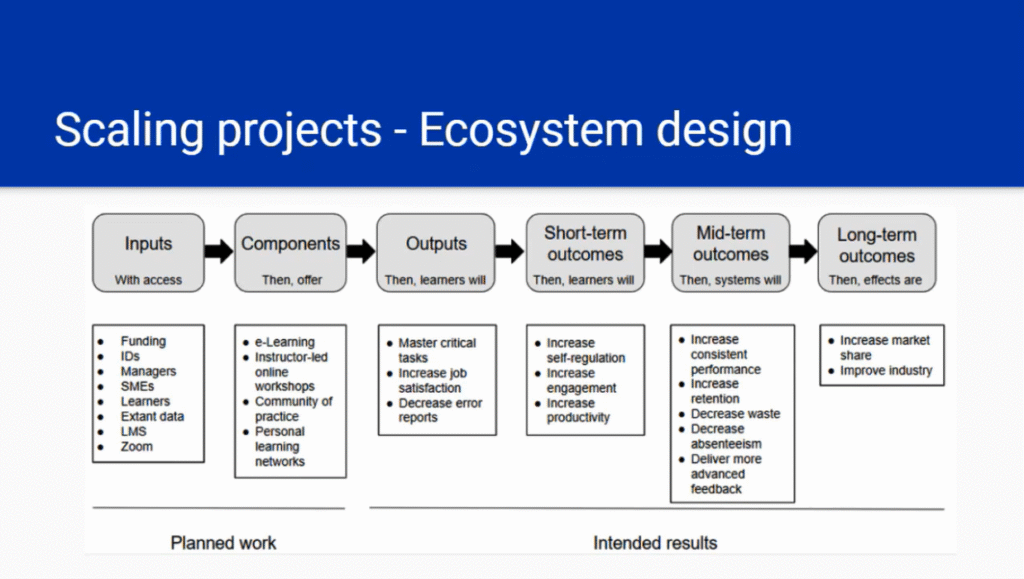By Jason Boursier
As someone who’s always searching for the next leap in instructional design (ID), I recently attended a webinar that reframed my perspective on inclusive design and how we as learning designers partner with organizations. The session, “LeapsID Model—How to Increase Engagement and Deliver Results Through Inclusive Design by Expanding the Partnership Principle of HPI” (August 10, 2023), was led by Dr. Lisa Giacumo and Dr. Steve Villachica, two leaders in the Organizational Performance and Workplace Learning space at Boise State University. Their collective experiences, ranging from creating nuclear submarine training to building cognitive task analyses for detectives, brought practical wisdom—and a refreshing dose of humor—into what could have been just another webinar on ADDIE.
Inclusive Design: The Sphere That Shapes Everything
The LeapsID Model introduces a layered approach to ID. Imagine the traditional ADDIE framework (Analyze, Design, Develop, Implement, Evaluate) not as a rigid sequence, but as dynamic, interacting “bubbles” floating inside larger spheres of influence—culture, inclusive design, and project management. These external spheres aren’t passive—they shape every phase of a project, ensuring the solutions we build are as inclusive and contextually aware as possible.
What resonated most with me was the way inclusive design isn’t an afterthought or a checklist item, but an ongoing lens that guides every decision. In a world where equity, access, and belonging matter more than ever, this is the kind of wholeness our field needs.
Heuristics: The Real-World Shortcuts for Instructional Design
Lisa and Steve emphasized something all working IDs eventually learn—instructional design is a team sport. You never go it alone. The LeapsID model recognizes that projects live in the real world, not a textbook, so it’s filled with ID heuristics (mental shortcuts for solving problems in messy, ambiguous situations):
- Use coproduction—bring stakeholders and learners into the design process.
- Embrace the dynamic nature of ID—change is constant.
- Know when to make assumptions—sometimes data is incomplete, and you must still move forward.
Both project sponsorship and needs assessment serve as anchors, guiding us as we navigate formal and informal data, and yes, sometimes just our best-educated guesses.
Strategic Alignment: Choosing the Right Intervention
The webinar also revisited the Pershing and Molenda Strategic Impact Model—a great tool for separating what actually needs instructional intervention from what doesn’t. Here’s a quick breakdown:
- Start with strategic planning and performance analysis.
- Dive into cause analysis (skills, environment, tools, incentives, cognitive support, organizational system, inherent abilities).
- Pro Tip: Only “skills and knowledge” require true instructional intervention; other causes call for non-instructional solutions or even just hiring differently.
This level of clarity is a lifesaver for IDs who sometimes feel pressured to “train” their way out of every problem.
Lessons from the Field
Steve’s philosophy? “Nobody as a kid says, I want to be an IDer!” And he’s right—we all arrive here accidentally, driven by curiosity and a desire to solve real problems. His advice: ask clients, “What keeps you up at night?” and make the value of your intervention visible from day one. Lisa’s approach is about spotting patterns and finding the real root of the issue.
Their stories—from training submarine crews to helping detectives think—reminded me that IDs have a unique vantage point: we’re both architects and partners in organizational change.
Applying the LeapsID Model
As I continue to grow in this field, I see myself using the LeapsID Model as a mental map—one that keeps me grounded in inclusive practice, aware of context, and always ready to question:
“Does this solution address the root problem? Is it inclusive for everyone involved? Are we co-creating value with the people we serve?”
This model isn’t just theory; it’s a practical tool I’ll bring to job interviews and new projects alike. It’s proof that I see instructional design as both a science and an evolving art—always team-based, always inclusive, and always in service of real results.
Have you used models like LeapsID or Pershing & Molenda to guide your projects? What’s your take on making inclusivity the heart of instructional design? Drop a comment below!





Leave a Reply
You must be logged in to post a comment.